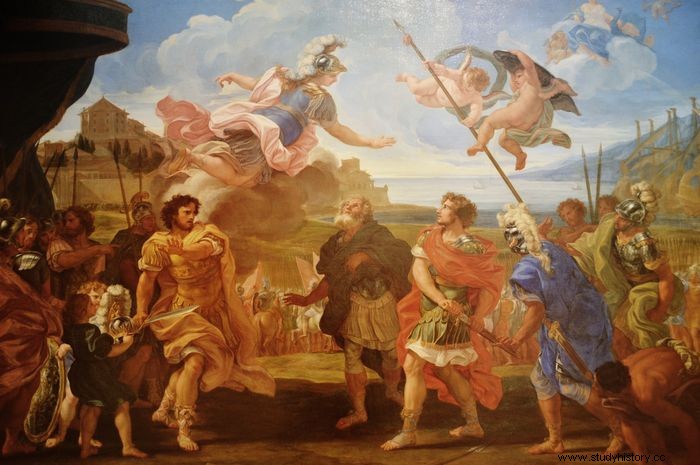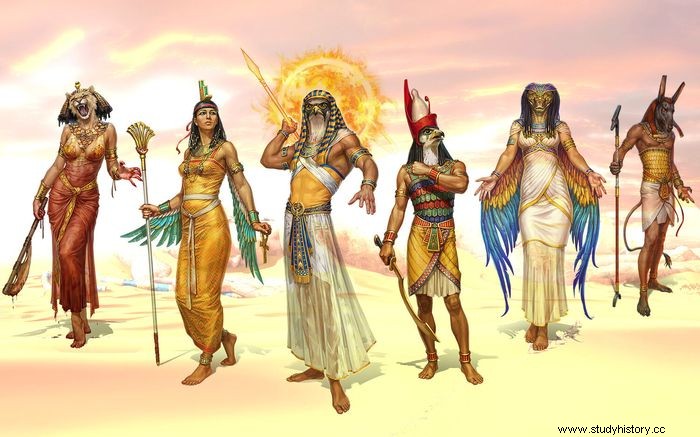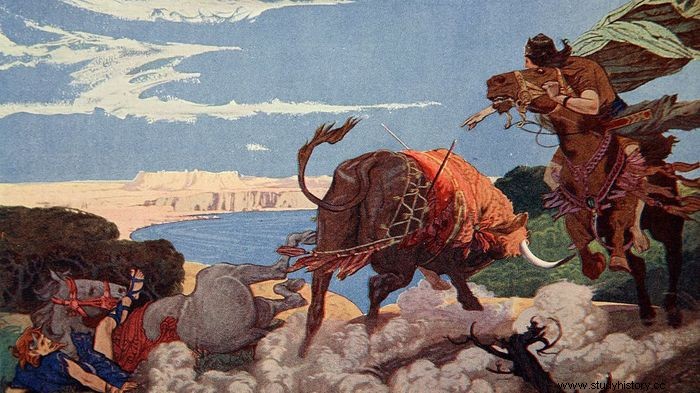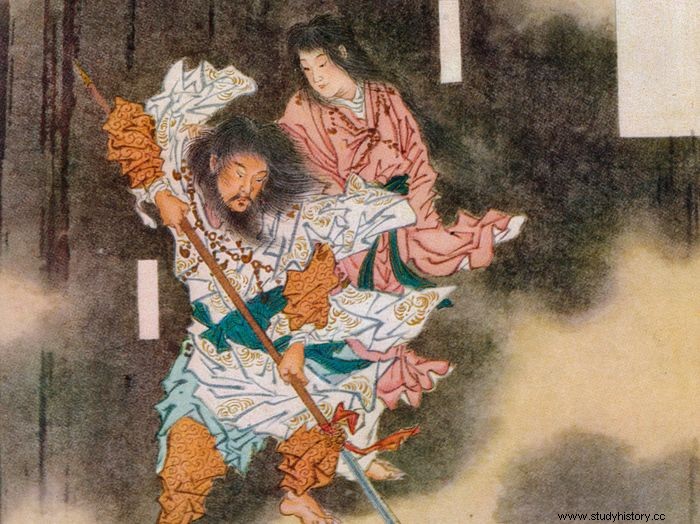For thousands of years, mythological tales have nourished the human imagination and soul. Passing on the vast majority of these legends happened simply as myths through the generations. However, a select handful are based on actual geological events from the past, alerting us to possible dangers and expressing our respect for the power of the planet. The observations of these events are present in these accounts. Mythology always plays a role in society, provides answers to phenomena that have no explanation and gives people hope in terrible times.
Even today, we turn to our interpretations of mythology in the form of superheroes and science fiction epics. There are many different cultures and religions around the world. All are based on legendary ideas.
Mythological Tales in Greece

Greek mythological tales of gods, goddesses and heroes are one of the most prominent aspects of Greek civilization. Because these stories were so compelling, the Greeks had a long tradition of storytelling that lasted for thousands of years. It is no wonder that Greek mythology continues to be popular in movies, novels and video games today. Greek mythology is seen as an early type of psychology or sociology, where each deity expresses a basic archetype in society. The Greeks had a strong influence on the Romans, who continued to practice Greek culture and traditions. The most important transmission of the Greek myths happened to go to the Romans, although there were a handful who did not.
A beauty contest between rival goddesses triggered the Trojan War
Except for Eris, the goddess of disagreement, all the Olympic gods had an invitation to Peleus and Thetis' wedding. Eris was furious and decided to teach the unifying Olympians a lesson. She threw a golden apple among them with 'For the most beautiful' etched. Three gods fought over the apple:
- Hera, the goddess of the home
- Athena, the goddess of talent
- Aphrodite, the goddess of beauty
No god, not even Zeus, dared to decide which of the three goddesses was the most attractive and deserving of the apple. Paris accepted the invitation from Aphrodite. But unfortunately he gave her the apple, and as a result, he and the land incurred the hatred of Troy Hera and Athena forever. As a result, the Trojan War happened because of the pettiness of the gods rather than human error.
Cupid and Psyche Psyche Myth
Once upon a time, a king and a queen ruled over an unknown city and had three beautiful daughters. Psyche, the newest and most beautiful of the goddesses, let her followers pray and give gifts to her instead of the traditional devotion to Venus, the goddess of love. The speculation was that she was the goddess Venus' second coming or the goddess's offspring from an inappropriate connection with a mortal. Venus is angry and hires Cupid to take revenge on her. She sends Cupid to shoot Psyche with an arrow to make her fall in love with someone he finds repulsive. Instead, he uses his arrow to scratch, which makes every living thing fall in love with the first thing it sees. As a result, he falls in love with Psyche and defies his mother's wishes.
Abrahams Mythological tales
The mythological stories of the Jewish, Christian and Muslim peoples are known as Abrahamic mythology. Yahweh is the most significant deity in Abrahamic mythology. He created the earth with a word in XNUMX. Exodus and is the giver and sustainer of life in all beings - humans and animals - since he is considered one.
Other important deities include Allah, the Giver and the Sustainer, who embodies goodness and is a loving father to his offspring, but who can also be angry if not obeyed, resulting in shingles.
Then there is the Son of God, Jesus Christ, who was born of a virgin named Mary and 12 apostles, including Paul. Paul served as a guide in difficult times when mankind had forgotten God's teachings. Then there are archangels like Michael and Gabriel, who work with God / Allah to protect and balance the earth.
Adam, Eve, an apple and a sliding serpent were the original sinners
In six days God created the world out of nothing and rested on the seventh. He created Adam, the first man, in his image, and Eve, the first woman, of Adam's ribs. He instructed Adam and Eve to enjoy the beautiful Garden of Eden, but not to eat the fruit of the Tree of Knowledge. It was the forbidden fruit. Although Adam and Eve obeyed God, the Devil, disguised as a serpent, enticed Eve and persuaded her to eat the forbidden fruit. She then persuaded Adam to consume it as well. The innocence was suddenly gone. People were aware of their nudity and tried to hide.
God was displeased with His creatures and expelled them from Eden for this first act of disobedience. He also ordered that the woman should be accountable to the man and that the transgression should be paid by the offspring of Adam and Eve - all mankind.
Various Jewish, Christian and Islamic mindsets dispute the details of this story. The fruit is referred to as a pomegranate in Jewish mythology. It is described as an apple in Christian legend. It is the banana in Arab tradition since they viewed India as the Garden of Eden with silk and spices.
While original sin is a central feature of Christian mythology, Allah forgives Adam and Eve in Islamic mythology. Thus, there is no idea of inherited sin or the transmission of iniquities to subsequent generations.
Egyptian Mythological tales

Egyptian mythological tales are a major topic. It consists of several mythologies, each with its gods and goddesses. One of the reasons why Egyptian mythology is still important today is its incredible diversity.
Egypt's most famous god, Horus, was sometimes represented as a falcon or a man with a falcon's head, wearing the twin crown as Upper and Lower Egypt. Other prominent Egyptian gods include Anubis, the god of embalming and mummification; Bastet, a cat goddess with a human or cat head; Sobek, a crocodile or man with a crocodile head; and Bes, another god in Egyptian mythology.
Ankh and the hieroglyphs, for example, demonstrate the centrality of Egyptian mythology in art and literature as well as other aspects of daily life. Their faith was so important to the ancient Egyptians that they had ceremonies for everything they performed, even burials and tombs. Moreover, the ancient Egyptians believed that while on the way to life after death, they would be judged and punished if they were not good.
"The True Heir" is an ancient tale of sibling jealousy and betrayal
The cosmos began as Nu water, from which the first pyramid-shaped mound developed, similar to the earth that rises after the Nile has retreated. On this mound, Atum gave birth to the air deity Shu and the moisture goddess Tefnut, who gave birth to Geb, the earth god, and Nut, the goddess of the sky, who gave birth to Isis and Osiris, the first queen and king of human civilization. Because he masturbates to generate his male and female offspring, Atum is often described as macho. However, he is also known as 'the great male-female', referring to the androgynous state of existence before he introduced the two sexes.
Osiris created a great dominion as the first king of the Nile Valley, but his brother, the lord of the desert, became jealous of him and invited him to supper before showing him a box. "Does the box have a smaller or larger size than you?" Seth asked, almost innocent. Seth asked Osiris to lie in the box and check since he was not sure. Osiris went into the box without thinking about it. Seth closed the coffin and buried Osiris alive immediately. Then he divided his body and threw it into the Nile.
Isis searched the fields for fragments of her husband's body and put them together. She then used her magical abilities to revive her husband long enough for her to have a child, whom she called Horus, Osiris' rightful heir. On the other hand, Horus had to fight countless wars to cement his dominance over Seth.
Norse Mythological tales
Germanic tribes in northern Germany and Scandinavia developed Norse mythology. The Germanic people believed they descended from two groups:sir (gods) and vanir (gods and goddesses) (spirits of nature).
Odin was the monarch of Asgard, created by him and his brothers Vili and Ve after killing their father Ymir to establish Midgard, or the "Middle Earth". Odin is considered to be aware of everything that is past, present and future. He was associated with battle, knowledge, magic, battle triumph, poetry and writing.
Thor, another famous Norse deity, was a god of thunder who used a hammer produced by dwarves named Mjolnir to protect Asgard from the giants of Ginnungagap (thunder).
The story of the spiritual progress of the god king Odin and the sacrifices he made
Odin was the monarch of the Azerbaijan and god of war and earth and heaven, knowledge, poetry and magic. He was a shaman, a lover of trance and ecstasy, often "feminine", and humiliated the Viking warriors who loved his male side. His solitary, penetrating eye is one of the most characteristic features of his appearance. His other eye socket is empty; the eye that used to be there was sacrificed in the name of wisdom. He gave it up to draw wisdom from the well.
Odin is sometimes shown as the leader of the Wild Hunt, a spectral procession of the dead who travel across the winter sky. He rides an eight-legged horse. He travels with his raven and wolf, and they provide information about what is happening in all corners of the world.
Mythological tales o f Mesopotamians

The mythology of Mesopotamia, which spans millennia, is still important today. This is because Mesopotamia was the birthplace of civilization and one of the oldest civilizations in the world; hence its tales are incredibly ancient! Therefore, all stories from Sumer, Akkad, Assyria, and Babylonia that were part of present-day Iraq are referred to as "Mesopotamian mythology."
Anu (the god of heaven), Enlil (the ruler of the earth / storm god), Ea (god of water), Ishtar-Inanna, a goddess associated with fertility and struggle, and Tammuz, his wife, were among the Akkadian gods. The Hittites, for their part, worshiped storm gods such as Tarhunt and Teshub
Marduk, a sun deity who rose to power by destroying an older generation of gods, was one of the most famous Babylonian stories in Mesopotamia (Tiamat). In addition, Enkidu, Gilgamesh's friend / companion; Humbaba, their nemesis; Lilith, according to Jewish belief, Adam's first wife; and Siduri, a siren or wise lady living near the coast, are all characters from the Gilgamesh epic.
Gang fights are older than you think
Inanna, who ruled the earth, the realm of the living, and Ereshkigal, who ruled the underworld, the land of the dead, were rivals. Inanna decided to travel to the underworld. She informed the underworld gatekeeper that she wanted to attend her brother - in - law's funeral. Inanna ordered her minister Ninshubur to beg the gods Enlil, Nanna and Enki to save her if something went wrong before she left.
Inanna went through seven gates, each of which required her to remove a piece of clothing or jewelry she had been wearing at the beginning of the journey. She was completely naked and vulnerable when she approached her sister. Inanna was transformed into a corpse and hung on a hook by Ereshkigal.
After three days and three nights, Ninshubur went to the temples of Enlil, Nanna and Enki and prayed that the goddess of life, love and life would be saved. The first two gods refused to help, claiming it was her fault, but Enki was upset and agreed. He made two asexual figures (neither male nor female). He asked them to please Ereshkigal by asking for Inanna's body and sprinkling it with the food and water of life when she asked what they wanted.
The two genderless units were able to revive Inanna as Enki predicted. However, Ereshkigal's demons followed Inanna out of the underworld and told her that she could not leave until someone else took her place. The decision was then made that Dumuzi would spend half the year in the underworld with Ereshkigal and the other half with Inanna.
Killing the mother:When generations became bloodthirsty in their quest to build the world, heaven and humanity
All of Tiamat's children lived in her body since she was the great mother of all gods. Everything was in order until the children created such a racket that the old gods prayed that the new gods would be destroyed. Tiamat warned his children the first time this happened. Tiamat ordered her wife to destroy the new gods the second time this happened.
The new gods united around Marduk, who defeated Tiamat and her wife and all the ancient gods who stood with them after a fierce battle. Marduk formed the earth beneath and the heavens above from Tiamat's body. Tiamat's tears formed the rivers Tigris and Euphrates. Humanity was born from the blood of her consort and the crimson earth. Mankind, who were the offspring of the ancient gods, was forced to serve the new gods forever. Floods and storms were the result of a lack of service for the new gods. Enuma Elish tells the story.
Inuit Mythological tales
Animism, or the concept that everything has a spirit, is the basis of Inuit belief. This belief indicates that not only animals do it, but also trees, water and celestial bodies.
Inuit mythology, the gods are no different from any other spirit; they are just higher level spirits. Shamans, who are Inuit religious leaders, are said to have the ability to manipulate spirits. On the other hand, the spirits of the gods were so strong that the shamans could not control them. Therefore, they were given the task of talking to them and trying to satisfy them.
Creatures of the Sea tells the gruesome story of how life began in the oceans
Sedna was a beautiful young woman whose widow always tried to marry her off, but she refused. She continued to say no to her countless admirers. One fateful day, a seabird offered to take her to his "comfortable, lavish" house. The wiped-out young lady ran away with the bird, but their "nice, lavish" home turned out to be a dirty, smelly nest, and her new husband treated her like a slave.
Sedna begged her father to take her home, and he agreed. A group of seabirds surrounded the boat as they crossed the waves. Their constant wingbeat created a massive storm that tossed their small vessel from side to side. Sedna's father threw her into the water to satisfy the raging birds, fearing for his safety. He cut off Sedna's fingers as she tried to get back into the boat. He chopped off her hands and threw her and her pendants into the river while she struggled to use her disfigured hands to try again. Her fragmented parts evolved into fish, seals, whales and other marine creatures as she sank to the depths of the ocean.
Japanese Mythological tales

The stories of gods, devils and monsters are central to Japanese mythology. Izanagi-no Mikoto is a deity in Japanese mythology who with his sword formed the many islands that make up present-day Japan. Tsukuyomi (sun goddess) and Amaterasu (sun goddess) were born to him and his wife (moon god). Because they lived on top of the ancient tree, which symbolized life itself, these two are known as "the heavenly deities."
Susanoo, or Susa-no-o, was a significant god in Japanese mythology who fought against Yamato Takeru, son of Emperor Keiko. Susanoo fought for territories on earth until he died after falling from a cliff during the fighting.
The First Couple:When a Desperate Husband Accompanied His Wife to the Land of the Dead
The first human couple, husband Izanagi and wife Izanami, were responsible for removing islands from the sea. They inhabited the islands with their children. These different gods populate the Japanese landscape. Unfortunately, Izanami died while carrying the fire god, and Izanagi was so devastated that he swore to bring her back. So he traveled to Yomi, the mysterious realm of the dead, in search of his bride. Unfortunately, Izanami had eaten Yomi's meal and could not return.
Izanagi, longing to see his wife, lit a lamp. He was horrified when he discovered that her once beautiful body had rotted and was covered in larvae. Izanami, who longed for her husband and wanted to stay, chased him out of the underworld in fear. Eventually, Izanagi came to earth and erected a massive boulder to block the entrance to the underworld. "I will slaughter a thousand live animals daily," shouted his furious wife. "Then I will produce 1,500 new lives every day," Izanagi shouted back. As a result, the story ends with lifelong alienation and hatred.
The conclusion
Finally, these myths have key parts that we can connect to, so they are significant and worth studying. Mythologies are important because they reveal how people used to interpret the world and how we still do it now. The themes and concepts conveyed by these stories have the potential to be useful in today's culture.
